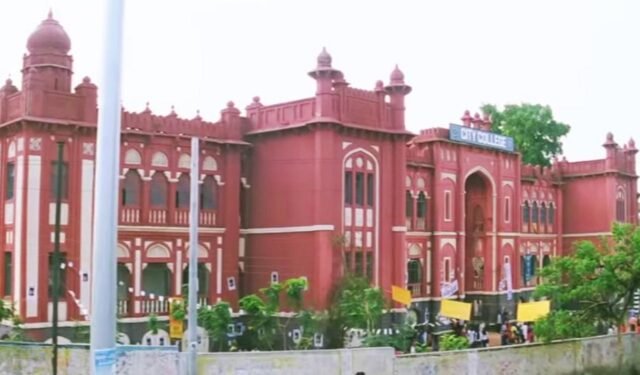From Punjabi and Kannada to Odia and Bengali, and from Bhojpuri and Malayalam to Koya and Banjara, the college campus is home to a diverse group of students fluent in 17 regional languages while fostering communal harmony. Additionally, some students are native speakers of Maithili and Gondi, though Telugu and Hindi remain the most widely spoken languages.
Updated On – 10 February 2025, 01:50 PM

Hyderabad: Located on the banks of Musi river, the historic Government City College in Nayapul, which has long been known for academic excellence, emerged as the melting pot of multilingualism, reflecting Hyderabad’s rich linguistic and cultural diversity.
From Punjabi to Kannada, Odia to Bengali, and Bhojpuri to Malayalam and Koya to Banjara, the college campus has a vibrant mix of students who speak 17 different regional languages and also maintains communal harmony. There are a few students who are native speakers of Maithili and Gondi languages, while Telugu and Hindi speakers remain predominant.
Though English is the main language of communication between students and faculty, the diverse languages spoken in classrooms have created a unique atmosphere, aiding students to pick up each other’s languages besides exchanging cultures.
“It’s good to be part of the peers who are from diverse backgrounds. This is helping us learn each other’s languages like Telugu. Though I cannot speak fluently I can understand,” says a final BA Hons History student, Priyanka Roy Raut whose mother tongue is Maithili.

For students like Dhanekar Sangeetha, a native Marathi speaker, the college has proven to be a good experience, offering holistic development. “I learnt about this college through my friends and joined and later I got to know that there are students who are from diverse backgrounds which is not seen in other colleges. Here I learnt Telugu from my friends,” says Sangeetha, a BSc final year student.
The City College history dates back to 1865 when the then ruler, Nizam Mahbub Ali Khan Asaf Jah VI of Hyderabad established it as the first City School, naming it Madarsa Dar-ul-Uloom. Nizam VII Osman Ali Khan converted the Madarsa into the City High School and moved it into the present building in 1921.
In the same year, the Osmania University’s intermediate sections with 30 students were started with Urdu as the medium of instruction. Later, the institution was rechristened as the City College after upgradation of the school into the college in 1929.
City College principal Dr. P Bala Bhaskar said multilingualism has been the uniqueness of the college, which has been well appreciated by the NAAC peer team that has recently inspected and granted highest grading.
“Given students from diverse backgrounds, the college celebrates all cultures and continues to maintain harmony,” Dr. Bhaskar added.
Native languages of students
- Banjara
- Bengali
- Bhojpuri
- Hindi
- Bihari
- Kannada
- Maithili
- Marathi
- Odia
- Gondi
- Marwadi
- Madhura
- Malayalam
- Koya
- Telugu
- Urdu
- Punjabi








